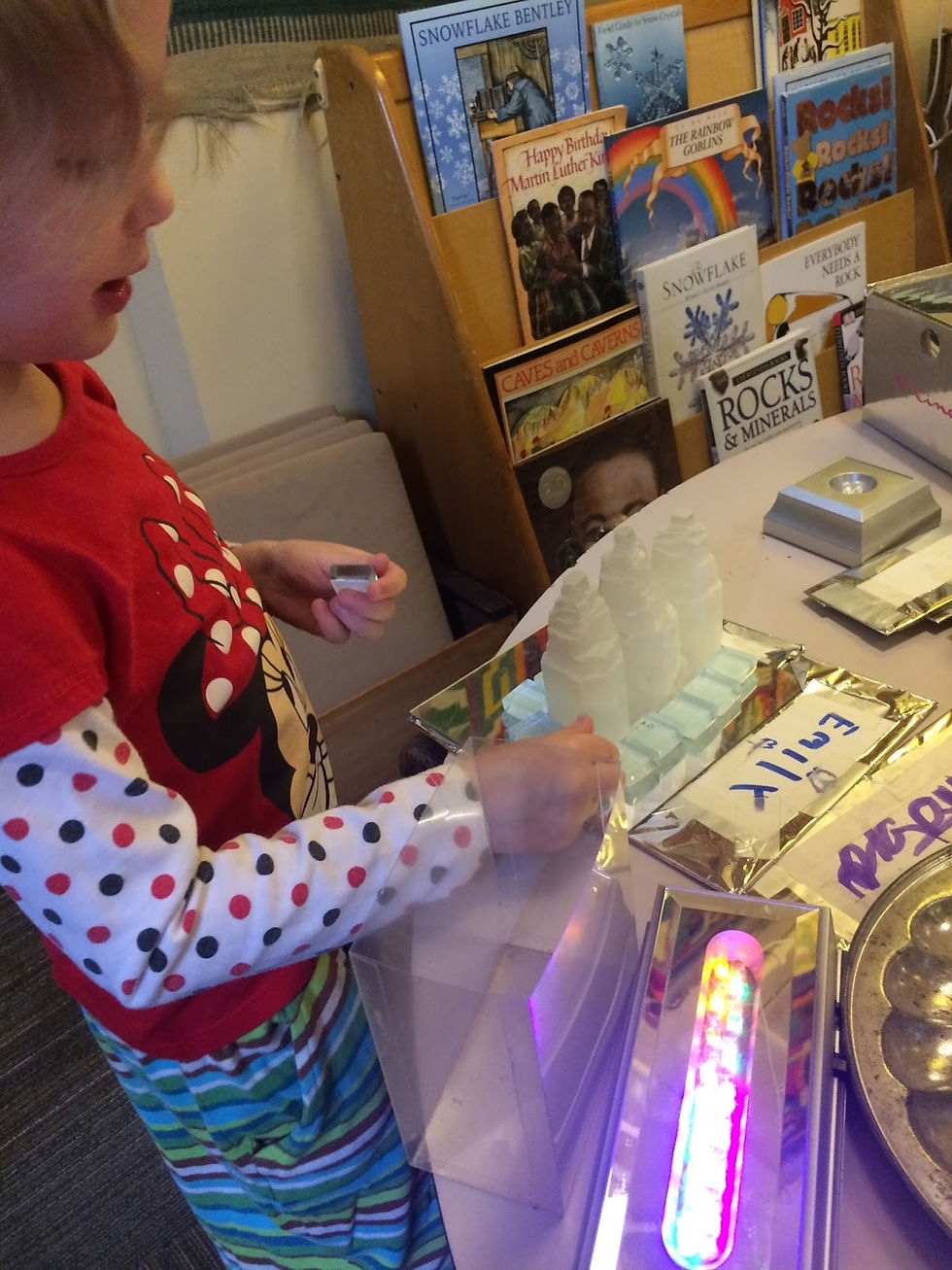A Crystal Unit in a Fluid Curriculum by Quinn Slotnick
- Lake and Park
- Feb 14, 2017
- 3 min read

The thematic curriculum at Lake and Park helps to create an important structure that inspires creativity, academic learning and the building of a close community. This structure also provides a freedom, to move within themes and follow student interest. The themes provide a jumping-off point and learning hopes for students, but the structure is loose and in following enthusiasm we are able to enrich our themes, learn more and provide an improved experience for students.

With the closing of our light and electricity unit the Beginning and Very Beginning rooms moved into a study of winter and more specifically, snow and ice. The fluid nature of our curriculum allowed the downstairs to take inspiration from snow, snow and ice crystals and look at crystals as a larger topic. This coincided fortuitously with members of the Very Beginning room participating in Winterim at Crystal Mountain!

The beginning of a new study is an exciting time for us in the Very Beginning room. As the studies are changing so does our physical environment; the art on the walls, books on the shelves and the manipulatives and other toys shift to match the new theme. Not unlike changes in Ms. Frizzle’s wardrobe and Magic School Bus, this material change helps to naturally inspire learning, art and play.

We put crystal pictures on the wall, brought in a selection of rocks and crystals and created a light and microscope station in which to look at the crystals more carefully. We also worked on crystal art projects, which we put up around the room to insure that there is always art on the walls. We made crystal collages with shiny materials and earth-toned paper and crystal drawings based on observations and still-life drawings with paint markers.

Our crystal studies truly began with the crystal observations and a station featuring crystals, over-sized chopsticks connected at the top and light stands. This allowed for creativity in moving and sorting crystals with the chopsticks and looking at the way light shown through different minerals.

These observations led us to creating our own crystals. We worked with the Beginning room to grow salt crystals in the classroom, which has proven to be fun and interesting, but also very slow. Students from the North Room joined the class to grow colored crystals with a kit from National Geographic, which are now upstairs for other classes to look at and further connect them to the rest of the school.

Working with salt crystals on the tail of a winter study inspired us to put salt in the sensory table to resemble snow and allow for closer look at grains of salt. The fluid curriculum showed itself to be truly important at this point as we followed our interests and took a much deeper look into salt. We studied salt from a geological point of view, looking at its crystalline structure, but also through the lenses of chemistry, social studies and biology.

Whereas much of the crystal study was split between the Beginning and Very Beginning rooms, the Beginning class took the reigns in the more academic study of salt. They first said things they knew and wondered about salt. Children stated that: Salt comes from the ocean, it has a strong flavor, it can make you thirsty, etc… They wondered if salt was a rock, a crystal, a spice!

We then read about the history of salt and drew pictures based on the ideas we were learning in order to answer our questions. We learned about its chemical structure, its history in China, Ireland and Egypt and its importance to the human body. Salt is such a large and complex topic that I found myself learning many new things and was excited to be part of our learning experience.

To wrap up our unit we are receiving a rock and mineral box from the Burke Museum of Natural History and Culture, which will give us more information on crystals in nature. We will be opening geodes on Friday and the children will be able to take home a tangible memory from this unit.

We will rejoin the upstairs classes during our next thematic study after mid-winter break, but it is comforting to know that the option to shift our focus based on the weather, politics, student interest or something else, exists. Our curriculum moves with us and as a result, our learning is relevant, interesting and most importantly, fun.



Comments